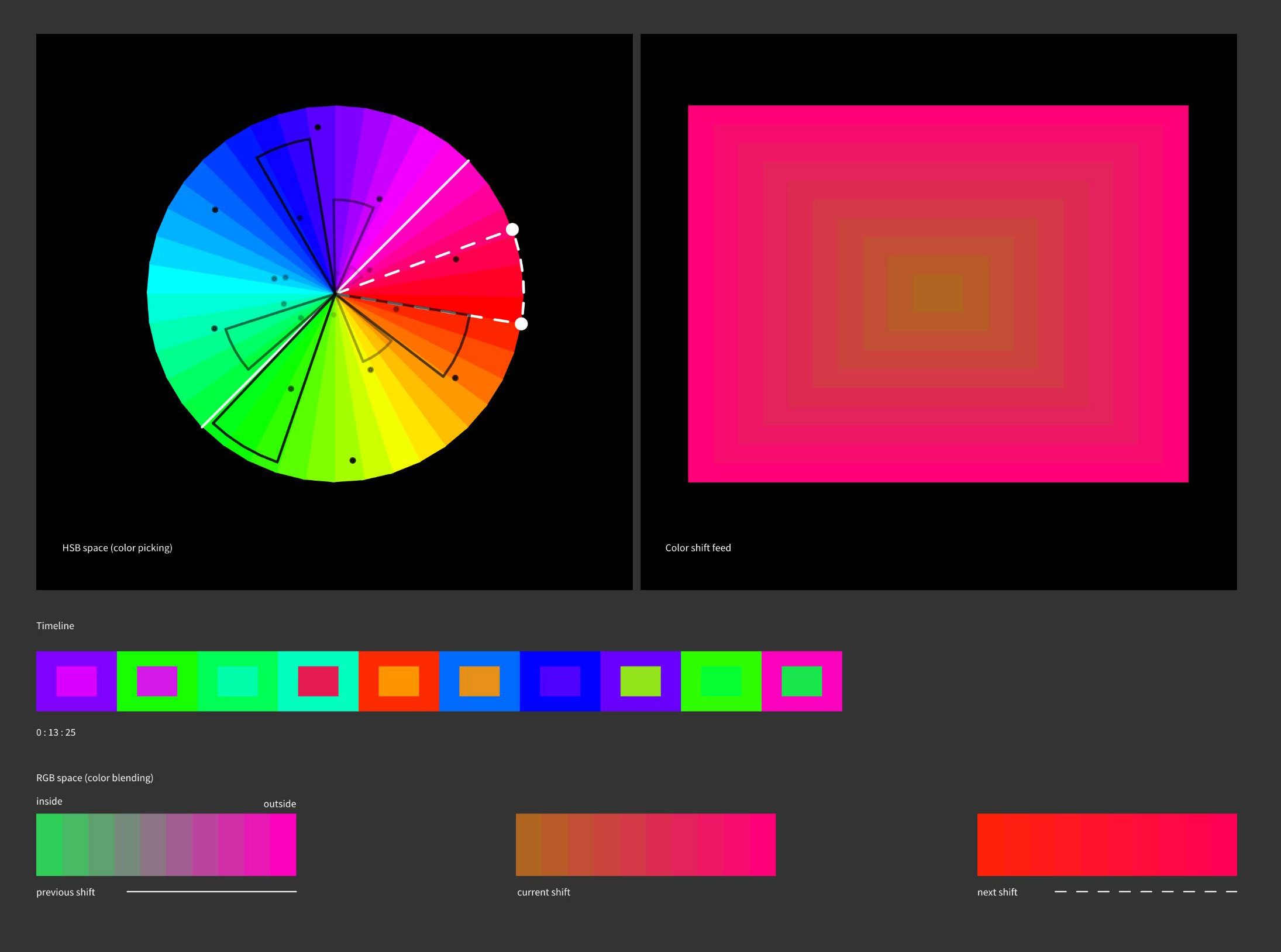This site uses cookies – More Information.
COLORSHIFT
Colorshift is an algorithmic formulation of color designed to heighten its perception through analogous and contrasting effects. A shift is defined as a graduated fade between two color frames, one at the center of the frame and one at the edge. Each frame’s initial color is determined by a controlled movement around an RGB color wheel. This movement is a kind of dance: it first moves between two analogous colors and then between the corresponding complementary color. This creates the perceptual effect that a color is made richer, so to speak, by blending its neighboring colors and then, by jumping to the opposite side of the wheel, the shift to its complementary color creates another rich contrasting move. As the eye gets accustomed to one field of color, it becomes more sensitive to the coming opposite color.
Colorshift also plays with the eyes by toying with persistence of vision. A perceptual effect sometimes associated with the notion of an after-image, persistence of vision describes an image that remains seen in the eyes of the beholder even after it is gone. Colorshift exploits this trick of the mind through the use of analogous and contrasting color shifts.
Finally, Colorshift gives a sense of depth through this play of graduated colors without any three dimensional or perspectival techniques. Space and movement are sensed but are not really there. In this way, Colorshift tries to extract an excess of experience from what is there. The human eye sees more than the algorithm gives.













